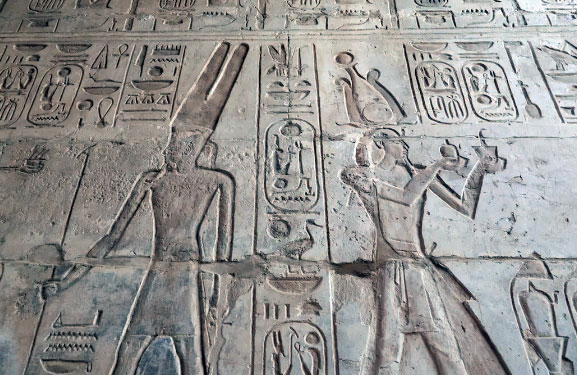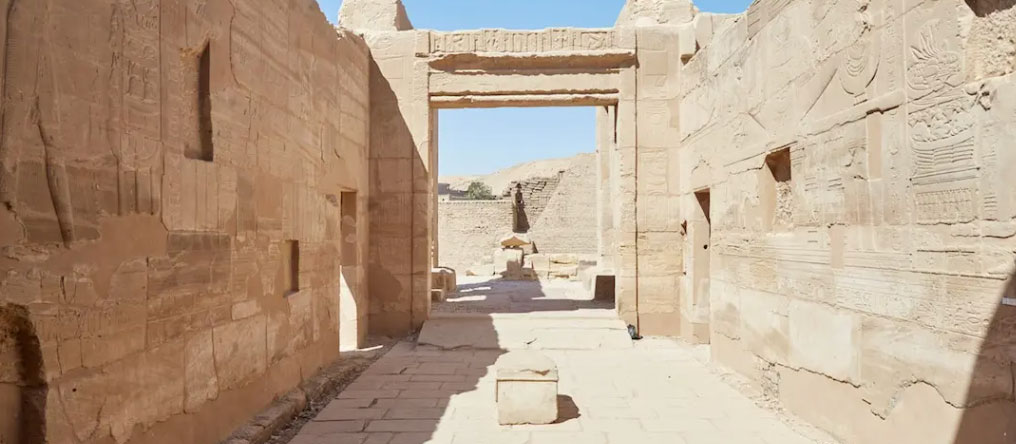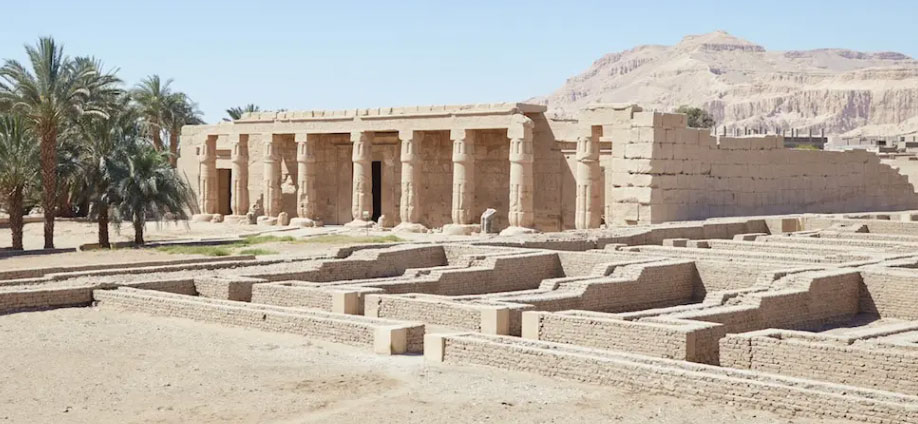Temple of Seti I in Luxor Egypt | Egyptian Temples
Discover the history of the Pharaonic civilization “Ancient Egypt History” to build the most important Pharaonic Egyptian Monuments and funerary temples in the ancient city of Thebes, the secrets and facts of the Temple of King Seti I, the most famous Egyptian Pharaohs kings of the Nineteenth Egyptian Dynasty during The New Kingdom period in the civilization of Ancient Egypt.
Discover the architectural design of the temple to tell us about the development of Architecture in ancient Egypt and Sculpture in Ancient Egypt and where it is located and what are the prices of entrance tickets and visiting hours and more to start your cultural tourism trip and visit the tourist attractions in Luxor in addition to learning about the rare archaeological tourist attractions in Egypt.
Temple of Seti I Facts
Who built the Temple of Seti I?
The temple was built during the reign of King Seti I but was not completed. After his death, his son, King Ramses II, took care of completing the entire construction in memory of his father..
What was the reason for building the Temple of Seti I?
The main objective was to build a funerary temple for King Seti I and his father, King Ramesses I.
Worship and sanctification of the ancient Egyptian deities – Ancient Egyptian gods and Goddesses as in the Ancient Egyptian religion, where it was dedicated to the worship of the God Amun–God Ra and his wife the God Mut and the God Khonsu.
- The temple contains a royal palace and a temple built during the reign of King Ramses I..
- It is considered the first funerary temple built in the 19th Dynasty of the Pharaohs..
- The temple was 158 metres long and is now 47 metres long and 50 metres wide..
Interior design map:
The outer courtyard of the Temple of Seti I and the buildings that were in it were demolished, and only the main structure remains, which includes the worship and burial chambers, where you will see 9 huge columns with Ancient Egyptian Papyrus flower capitals, in addition to another column that has been dilapidated due to erosion and climate conditions over the ages..
The architectural design from the inside consists of 3 gates, where the right door leads to the chamber of King Ramses II, the middle door to the hall of columns, and the last door to the chamber of King Ramses I..
Small Column Hall:
The hall contains 6 columns with pharaonic papyrus flower capitals..
The hall contains 3 rooms dedicated to King Seti I. He has the Tomb of King Sethi I | KV17 in the Valley of the Kings in Luxor..
When you finish the hypostyle hall, you will see a square hall, then the main structure, then a room resting on 4 ruined columns and containing simple inscriptions of King Seti I, then small rooms..
You will see a special room for King Ramses I (He has the Tomb of King Ramesses I | KV16 among the royal Egyptian Tombs in the Valley of the Kings) and it contains 2 columns with papyrus flower capitals, then after that a small lake.
On the seaward side of the temple wall there are remains of mud brick buildings that were used for storage..
The architectural design of the Temple of Seti I included a large courtyard and two pylons, but the current situation has destroyed the foundations of the first and second courtyards with the two pylons, leaving only the main structure..
You can reach the Holy of Holies chamber, which was dedicated to King Seti I and the worship of the Theban Triad, through the middle entrance..
The main entrance contains 6 pharaonic columns and a wide courtyard in addition to three cabins designated for the sacred boats for the worship of the trinity of the city of Thebes, then a square base containing 4 columns and containing small side rooms..

Seti I Temple Inscription:
There is a carving on the walls of the God Hapi, the god of the Nile River, carrying offerings..
You will see an inscription of King Ramses II “He has the Temple of Ramses II in Marsa Matrouh, Om El Rehem Matrouh, the Temple of Abu Simbel in Aswan, and the Tomb of King Ramesses II | KV7 in the Valley of the Kings” offering sacrifices to the god Amun in the presence of the God Min.
There is a distinctive engraving of the Amun boat in the presence of a group of priests from the Temple of Seti I and the High Priest of Amun.
You will see a carving of King Ramses II in the small columned hall dancing in front of the god Min, then a carving of King Seti I standing in front of a group of ancient Egyptian gods “Amun-Ra, God Khnum, God Atum, God Montu” to obtain the sign of life “Ankh” and the jubilee emblem as in the Pharaonic festivals “Festivals in Ancient Egypt“.
There is an engraving of King Ramses II in a kneeling position before the god Amun-Ra and King Seti I..
You will see a distinctive engraving on the walls of the outer chambers of King Seti I offering sacrifices to the ancient Egyptian gods..
You will see a relief of King Seti I offering sacrifices to the God Osiris and the Theban triad on the wall of the third chamber..
You will see an engraving of the purification ritual of King Seti I, in the presence of the God Thoth and Horus, on the wall of the second chamber, and another engraving of the king sitting on the throne, behind the god Maat, “the symbol of Law in Ancient Egypt,” in the presence of the god Horus..
You will see a carving of the king inside the Temple of Seti I sitting on the throne in the presence of a group of ancient Egyptian gods “God Thoth, Amun, Mut, God Sekhmet, God Ptah” and a drawing of the sacred boat..

About King Seti I:
Reign in Ancient Egypt “Ancient Egyptian Government“: 1290 – 1279 BC.
Pharaonic Dynasty: Dynasty 19.
Wife: Queen Tuya, the most famous queen of Pharaonic Egypt “Female Pharaohs“.
Children:
King Ramses II
Prince Hanut Mi Ra
Father: King Ramses I
Mother: Queen Sat-Ra
Date of death: 1279 BC.
Burial place: Tomb of Seti I in the Valley of the Kings, Luxor.
The monuments he built:
- Mortuary Temple of Seti I, Luxor.
- The Temple of Abydos in Abydos, Sohag, southern Egypt.
- Great Hypostyle Hall of the Karnak Temple Complex.
Where is the Temple of Seti I located?
The temple is located in the ancient town of Qurna, Luxor, Egypt..
Visiting hours:
Daily from 06:00 AM to 05:00 PM.
Entrance ticket prices:
Note: Facts and secrets of the history will be added soon…
Hurghada Excursions Lovers, Best Travel Agency in Hurghada to provide daily tours to visit the Tourist attractions of Luxor by Hurghada to Luxor Tours and Hurghada to Pyramids Trips. Book online when you come to Hurghada, El Gouna, Sahl Hashish, Makadi Bay, Soma Bay, Egypt Tours Packages.
